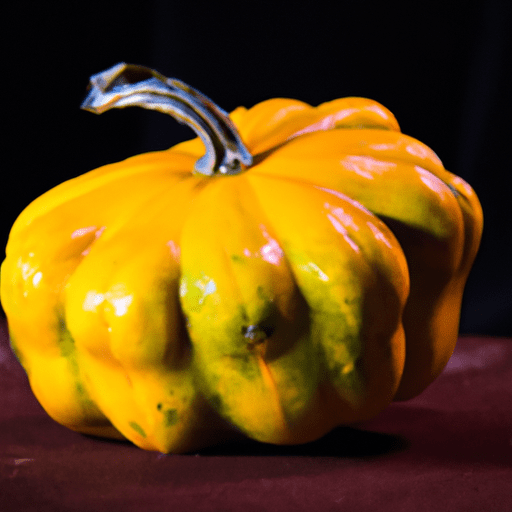The Wonderful World of Buttercup Squash
If you are a fan of winter squash, then you mustn’t overlook the marvelous buttercup squash. With its vibrant color, rich flavor, and versatile nature, it’s no wonder this particular squash has been the star of many delicious recipes. In this blog post, we will dive into the wonderful world of buttercup squash and explore its taste, common uses in cooking, nutritional value, and intriguing history. So, let’s get started!
Taste and Texture
Buttercup squash boasts a sweet and creamy flavor that is often compared to that of butternut squash, with hints of nuttiness and a subtle earthy undertone. Its flesh is dense and smooth, making it perfect for roasting, grilling, or pureeing. When cooked, the flesh turns vibrant orange and becomes incredibly tender, almost melting in your mouth.
Common Uses in Cooking
This incredible winter squash is incredibly versatile and can be used in a multitude of dishes. One popular method of preparation is to roast buttercup squash. Simply cut it into wedges, drizzle with olive oil, sprinkle with salt and pepper, and roast until it turns golden and caramelizes at the edges. The result is a delightful combination of sweet and savory flavors that will leave you craving more.
Buttercup squash also makes a fantastic addition to soups and stews. Its rich flavor adds a depth of sweetness, making it an excellent choice for hearty meals on chilly evenings. Additionally, you can steam or bake the squash and use it as a flavorful base for your favorite pasta dishes or risottos.
If you have a sweet tooth, you can even use buttercup squash in desserts! From delicious pies to velvety custards, its natural sweetness elevates any dessert it’s incorporated into. So, don’t be afraid to experiment and let your culinary creativity soar!
Nutritional Value
Aside from its fantastic taste, buttercup squash is a nutritional powerhouse. It is packed with essential vitamins and minerals, making it a wonderful addition to a well-balanced diet. Here are a few notable nutritional highlights:
Vitamin A: Buttercup squash is an excellent source of Vitamin A, which is crucial for maintaining healthy vision, supporting the immune system, and promoting proper growth and development.
Vitamin C: This winter squash also contains a significant amount of Vitamin C, an antioxidant that aids in collagen production, wound healing, and strengthening the immune system.
Fiber: With its high fiber content, buttercup squash contributes to digestive health, helps regulate blood sugar levels, and promotes a feeling of fullness.
Potassium: Rich in potassium, buttercup squash plays a role in maintaining proper heart and muscle function, as well as supporting healthy blood pressure levels.
History and Facts
Believed to have originated in South America, buttercup squash has a storied past. Native American tribes cultivated this winter squash long before the arrival of European settlers. It was an essential crop due to its long shelf life and nutritional value, making it particularly valuable during the winter months.
Interestingly, the name “buttercup” comes from the squash’s distinct shape, which resembles a buttercup flower. This versatile vegetable continues to delight food lovers around the world today, gracing many tables during the fall and winter seasons.
Final Thoughts
Buttercup squash, with its scrumptious flavor, numerous culinary applications, and impressive nutritional profile, is a true gem. Whether you roast it, puree it, or use it as an ingredient in your favorite dishes, this winter squash will undoubtedly leave a lasting impression. So, embrace the buttercup squash’s versatility and explore the many delightful ways to incorporate it into your culinary repertoire.
Facts about Buttercup Squash:
Origin and History: Buttercup squash, botanically known as Cucurbita maxima, is a winter squash that belongs to the Cucurbitaceae family. It is believed to have originated in South America and was first domesticated by Indigenous peoples thousands of years ago.
Appearance and Taste: Buttercup squash has a round shape with a green or dark green skin that is deeply ribbed. Its flesh is vibrant orange and has a rich, sweet flavor that is often compared to that of a sweet potato.
Common Uses: Buttercup squash is a versatile ingredient that can be roasted, steamed, boiled, or used in various recipes. It is commonly used in soups, stews, pies, casseroles, and even as a side dish or a stuffing for other vegetables.
Nutritional Benefits: Buttercup squash is low in calories and fat but high in dietary fiber, vitamins, and minerals. It is an excellent source of vitamin A, vitamin C, and potassium. It also provides significant amounts of vitamin E, vitamin B6, folate, and manganese.
Unique Properties: Like other winter squashes, buttercup squash has a thick, hard skin that helps it store well. It can be stored in a cool, dry place for several months, making it available as a nutritious ingredient during the winter months when fresh produce is limited.
Culinary Significance: Buttercup squash has become popular in many cuisines around the world due to its delicious flavor and nutritional value. It is often used as a healthier alternative to butter or oil in recipes, lending its creamy texture and sweetness to dishes.
Cultural Significance: In some Native American cultures, buttercup squash holds symbolic and spiritual significance. It is often used in ceremonies and traditional rituals that celebrate harvest and abundance.
These facts provide an overview of the origin, common uses, nutritional benefits, and unique properties of buttercup squash, as well as its historical and cultural significance.




Use the share button below if you liked it.
It makes me smile, when I see it.